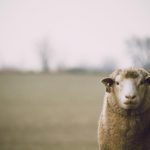You might think all wool is the same regarding sustainability, but that’s far from true. Different types of wool have varying environmental impacts and ethical considerations. While sheep wool is popular, it comes with significant challenges. So, how does alpaca wool stack up against other options? Exploring the nuances of these materials reveals much about their true sustainability.
Table of Contents
Key Takeaways
- Alpaca wool is generally more sustainable due to lower resource requirements and less environmental impact from grazing practices compared to sheep wool.
- Merino wool raises ethical concerns, particularly with mulesing, but some farmers are adopting humane practices to improve sustainability.
- Sheep wool has a larger ecological footprint due to methane emissions and potential overgrazing, despite being biodegradable.
- Yak and camel wool are sustainable options as they require minimal shearing impact and thrive in harsh climates, promoting eco-friendly practices.
- Certifications for responsible wool production aid consumers in making informed choices about the sustainability of various wool types.
Overview of Wool Sustainability
As you explore the world of wool, it’s important to understand its sustainability. Wool is a natural, renewable resource, which means it can be produced without depleting the environment. Sheep grow their fleece annually, and when managed properly, wool production can have minimal ecological impact.
Wool is a natural, renewable resource that can be produced sustainably with minimal ecological impact when managed properly.
Additionally, wool is biodegradable, breaking down over time and enriching the soil.
However, the sustainability of wool also depends on farming practices. Sustainable farms prioritize animal welfare, land management, and biodiversity. By choosing ethically sourced wool, you support these practices.
Consider the certifications that indicate responsible production, as they help you make informed choices. Understanding these aspects enables you to appreciate the broader implications of your wool purchases and their effects on the environment.
Sheep Wool: Characteristics and Environmental Impact
Understanding wool’s sustainability naturally leads to a closer look at sheep wool itself. This natural fiber, known for its warmth and durability, has unique characteristics that make it popular in textiles. Sheep wool’s ability to wick moisture and regulate temperature keeps you comfortable in various climates.
However, its environmental impact can be significant. Traditional sheep farming practices often involve land degradation and high water usage. Additionally, the methane emissions from sheep contribute to greenhouse gases.
While sheep wool is biodegradable and renewable, practices like overgrazing can harm ecosystems. Choosing ethically sourced wool from sustainable farms can mitigate these issues. By being mindful of your choices, you can support more environmentally responsible sheep wool production.
Alpaca Wool: A More Sustainable Alternative
Alpaca wool offers an attractive alternative to sheep wool, especially for those seeking a more sustainable option. Unlike sheep, alpacas produce less lanolin, making their fiber hypoallergenic and easier to process.
Additionally, alpacas have a lighter environmental footprint; they graze gently on grass without uprooting it, promoting healthier pastures. They also require less water and food compared to sheep, making them more efficient for sustainable farming practices.
The shearing process is less intensive, as alpacas typically shed their fleece naturally, which means less stress for the animals.
Merino Wool: Benefits and Ethical Concerns
When considering Merino wool, you’ll notice its impressive performance and versatility in various clothing items.
However, the ethical dilemma surrounding mulesing raises important questions about animal welfare that you can’t ignore.
Balancing these benefits and concerns is essential for making an informed choice.
Mulesing Ethical Dilemma
As you explore the world of Merino wool, you’ll encounter the contentious issue of mulesing—a practice that raises significant ethical concerns amid its benefits.
Mulesing involves removing strips of skin from a sheep’s hindquarters to prevent flystrike, a painful condition. While it may reduce the risk of infection and improve wool quality, many animal welfare advocates argue it inflicts unnecessary suffering.
You might find yourself torn between the advantages of high-quality Merino wool and the moral implications of mulesing. Some farmers are now adopting alternative methods, such as breeding for flystrike resistance, to address these concerns.
Ultimately, your choice in Merino wool reflects not just a preference for softness and warmth but also your values regarding animal welfare and ethical farming practices.
Performance and Versatility
Merino wool stands out for its exceptional performance and versatility, making it a favorite among outdoor enthusiasts and fashion lovers alike. Its natural properties keep you warm in winter and cool in summer, while also wicking moisture away from your skin. This means you can wear it for days without worrying about odors!
Here’s a quick comparison of Merino wool’s benefits:
| Benefits | Details |
|---|---|
| Temperature Control | Regulates body heat effectively |
| Moisture Wicking | Draws sweat away from the body |
| Odor Resistance | Naturally resists bad smells |
| Softness | Comfortable against the skin |
While Merino wool shines in performance, ethical concerns linger around sourcing practices. It is crucial to choose brands committed to sustainable and humane practices.
Yak and Camel Wool: Niche and Sustainable Options
In the world of sustainable fashion, yak and camel wool stand out as unique and eco-friendly options. You’ll find that both types of wool are sourced from animals that thrive in harsh climates, making them resilient and sustainable.
Yak wool, known for its warmth and softness, is collected during the molting season, ensuring minimal impact on the animals. Camel wool, on the other hand, offers excellent insulation and moisture-wicking properties, ideal for a variety of garments.
Both fibers are biodegradable and renewable, contributing to a lower environmental footprint compared to conventional wool. By choosing yak or camel wool, you not only embrace niche fashion but also support sustainable practices that benefit both the environment and local communities.
The Future of Sustainable Wool Practices
While the demand for sustainable fashion continues to rise, the future of wool practices is evolving rapidly. You’ll see innovations that prioritize animal welfare, regenerative farming techniques, and eco-friendly processing methods. These practices not only reduce environmental impact but also foster a deeper connection between consumers and the sources of their clothing.
Here’s a glimpse of the potential future of sustainable wool:
| Practice | Benefits | Impact |
|---|---|---|
| Regenerative Farming | Enhances soil health | Carbon sequestration |
| Ethical Sourcing | Supports animal welfare | Increases consumer trust |
| Eco-friendly Processing | Reduces water usage | Lowers carbon footprint |
Frequently Asked Questions
How Does Wool Compare to Synthetic Fibers in Sustainability?
When you compare wool to synthetic fibers, you’ll find wool’s biodegradable nature and renewable sourcing make it a more sustainable choice. Synthetic fibers, however, often rely on petrochemicals, contributing to environmental issues and pollution.
Are There Certifications for Sustainable Wool Products?
Imagine a shepherd tending to a flock, each sheep wearing a badge of honor. Yes, there are certifications for sustainable wool, like the Responsible Wool Standard, ensuring ethical practices and environmental care in every fiber you choose.
What Are the Best Practices for Washing and Caring for Wool?
To care for wool, hand wash it in cool water with mild detergent. Avoid wringing and use a flat surface to dry. Store it folded, not hanging, to maintain its shape and prevent stretching.
How Can Consumers Support Sustainable Wool Farming?
Imagine lush pastures where sheep roam freely. You can support sustainable wool farming by choosing certifications, buying local, and prioritizing brands that prioritize animal welfare and eco-friendly practices. Your choices can make a difference!
What Is the Impact of Climate Change on Wool Production?
Climate change affects wool production by altering sheep habitats, increasing heat stress, and shifting precipitation patterns. You’ll notice lower wool quality and yield as farmers struggle to adapt, impacting availability and prices in the market.







